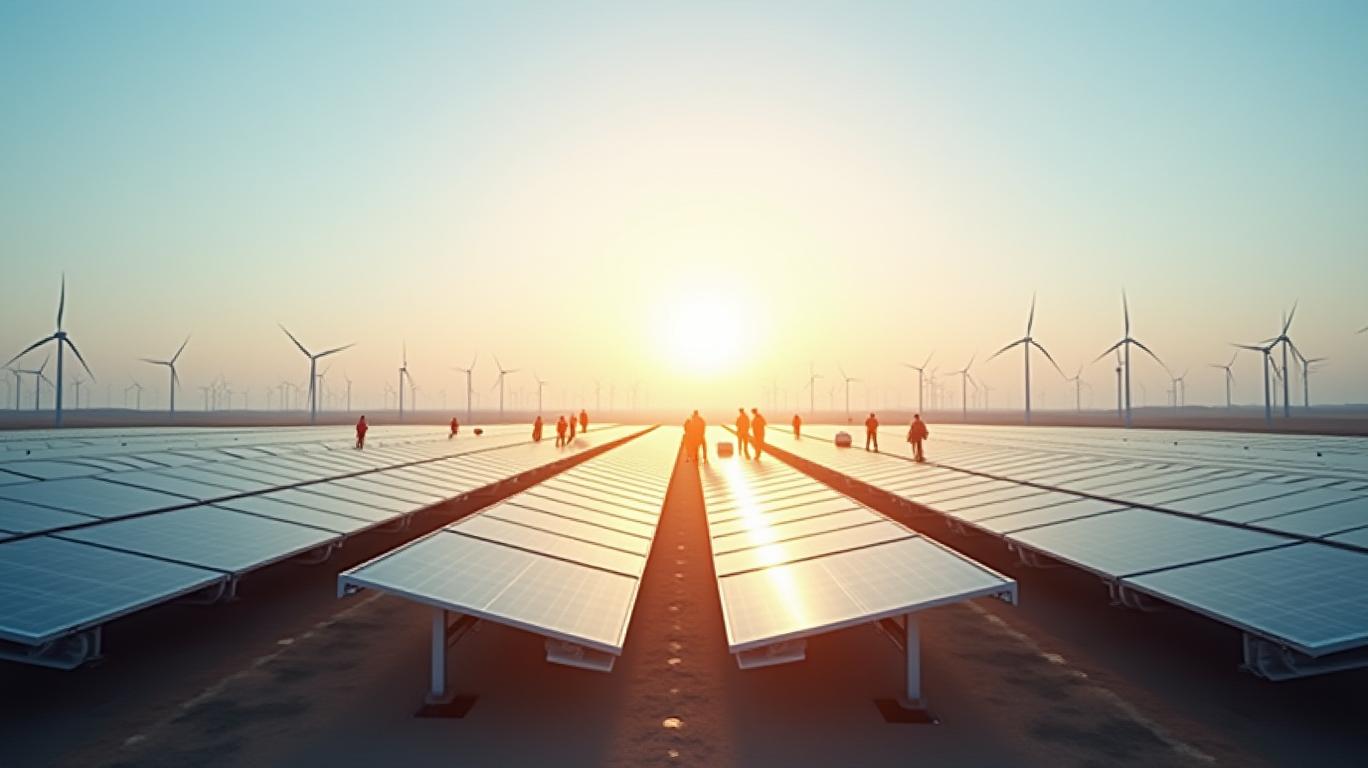Rotate into China’s Policy-Backed Future: Why Infrastructure and Tech Are the New Growth Engines
The Chinese economy’s recent retail sales data for April 2025—reporting a year-on-year growth of just 5.1%, down from March’s 5.9%—has sent a clear signal: consumer discretionary spending is struggling to sustain momentum. This slowdown, coupled with persistent income stagnation and regional disparities, has created a critical inflection point for investors. The time has come to rotate capital away from fading consumer trends and toward sectors directly benefiting from Beijing’s aggressive fiscal and policy priorities: green energy, semiconductors, and smart infrastructure.

Why Consumer Discretionary Is Losing Steam
April’s weak retail sales reflect deeper structural challenges. While sectors like luxury goods and appliances saw fleeting rebounds in Q1 (e.g., household appliances grew 35.1% YoY in March), these gains were policy-driven (via the RMB 300 billion trade-in program) rather than organic demand. Meanwhile, broader indicators like the consumer confidence index remain below pre-pandemic levels, and youth unemployment persists near 12-13%.
The data underscores a critical truth: consumers are tapped out. Middle-income households, burdened by housing costs and stagnant wages, are prioritizing essentials over discretionary spending. Even sectors like travel and entertainment—once seen as recovery darlings—are now facing trading-down behaviors as inflation bites.
Where the Real Growth Lies: Policy-Backed Sectors
Beijing’s March 2025 Government Work Report made it clear: long-term infrastructure and tech dominance are now fiscal priorities. The RMB 300 billion ultra-long treasury bond allocation—while partially directed at consumption—also funds projects in green energy, semiconductor manufacturing, and smart logistics. These sectors are poised to outperform as policy tailwinds offset weak consumer demand.
1. Green Energy: The New Industrial Revolution
China’s renewable energy sector is a policy juggernaut. Targets to achieve 80% non-fossil energy by 2035 require massive investment in solar, wind, and hydrogen. Already, wind turbine installations rose 15% YoY in Q1, while solar panel exports surged 22%.
Firms like Envision Energy (ENSG) and GCL-Poly Energy (688348.CN) are at the forefront of this transition. Their valuations—P/E ratios under 15x—are a stark contrast to overvalued consumer names trading at 25x+ multiples.
2. Semiconductors: The Tech Cold War’s Winner
The U.S.-China tariff truce in Q2 2025 has reignited semiconductor nationalism. Beijing’s “self-reliance” initiative aims to reduce reliance on U.S. chip imports, with subsidies for domestic foundries like SMIC (0981.HK) and Yangtze Memory Technologies (688981.CN).
Even a temporary tariff pause has 20%+ upside potential for chip stocks, as global supply chains realign. The sector’s R&D-to-revenue ratio (6-8%)—far higher than consumer discretionary’s 2-3%—signals sustainable innovation.
3. Smart Logistics: The Backbone of Modernization
Beijing’s push for “dual circulation”—balancing domestic and export-driven growth—relies on upgraded logistics. The RMB 1 trillion allocated to smart warehouses, AI-driven ports, and 5G-enabled supply chains will fuel growth for firms like ZTO Express (ZTO) and Hutchison Port Holdings (HPH).
These stocks trade at P/B ratios of 1.5-2x, far below the 3x+ multiples of struggling e-commerce peers.
Valuation and Timing: Why Act Now?
The sector rotation is already underway, but it’s not too late to capitalize.
- Consumer discretionary stocks now trade at 15% discounts to their 5-year averages, but fundamentals justify further declines.
- Green energy and tech sectors are underpenetrated by global funds, offering asymmetric upside as policy support intensifies.
Actionable Recommendations
- Rotate Out: Sell consumer discretionary names like Pinduoduo (PDD) and Baidu (BIDU), which depend on discretionary spending and advertising.
- Rotate In:
- Buy green energy ETFs (e.g., 515790.SH) for broad exposure.
- Target semiconductor leaders like SMIC (0981.HK) for tech nationalism plays.
- Allocate to logistics infrastructure via ZTO Express (ZTO) or the CICC China Logistics ETF (562890.OF).
The Bottom Line
Weak Chinese consumption is not a temporary blip—it’s a structural shift. Investors ignoring the government’s policy pivot toward infrastructure and tech risk missing the next leg of China’s growth story. With valuations favorable and tailwinds accelerating, now is the time to rotate into sectors that Beijing will back, regardless of consumer sentiment.
The future of China’s economy isn’t in struggling malls or luxury handbags—it’s in wind farms, semiconductors, and smart ports. Invest accordingly.

Comments
No comments yet